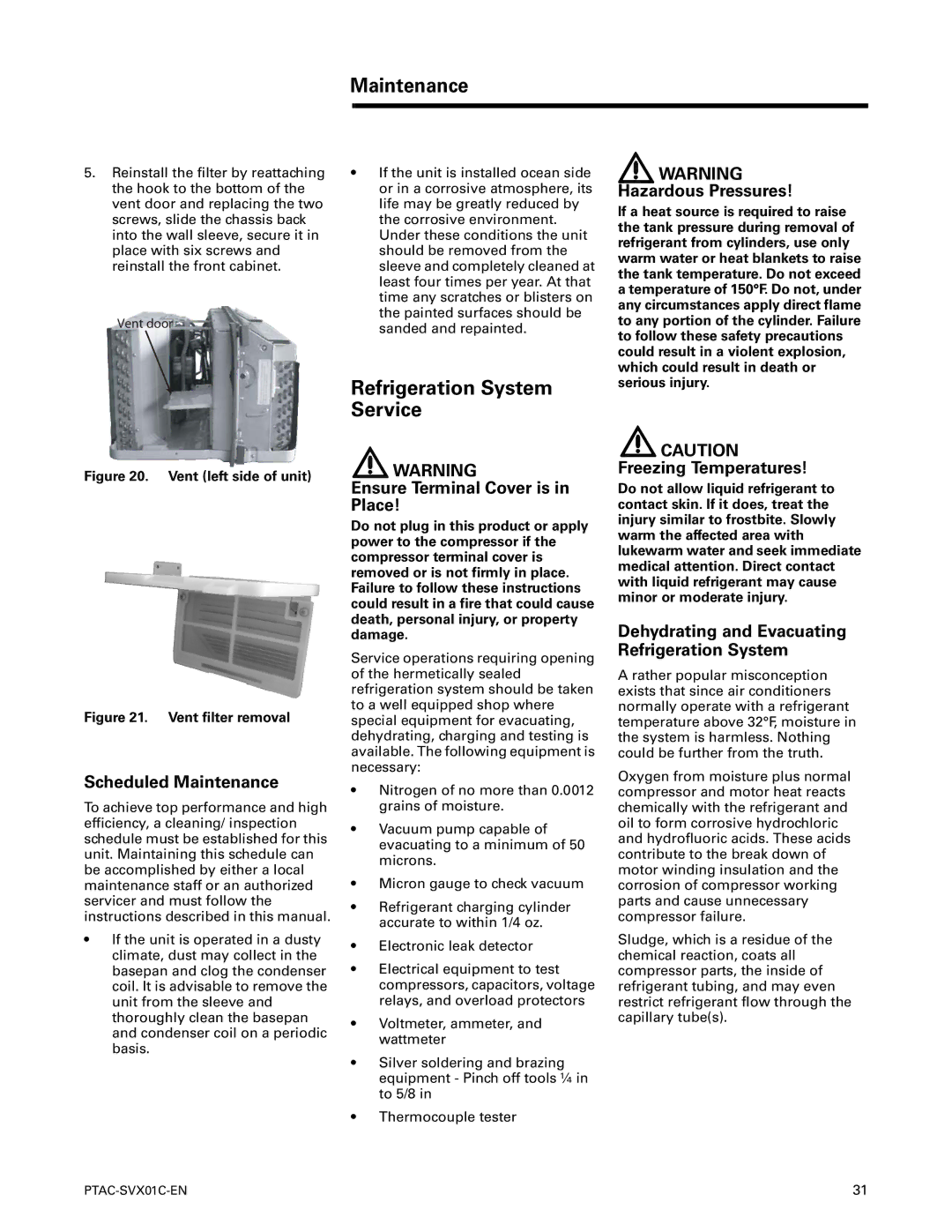PTAC-SVX01C-EN specifications
The Trane PTAC-SVX01C-EN is a cutting-edge Packaged Terminal Air Conditioner (PTAC) designed to provide optimal temperature control, energy efficiency, and user comfort in a variety of settings, including hotels, apartments, and office buildings. This unit stands out with its robust features and advanced technologies, making it a reliable choice for meeting diverse heating and cooling needs.At the heart of the Trane PTAC-SVX01C-EN is its innovative design, which combines powerful performance with quiet operation. This unit utilizes a high-efficiency compressor that ensures rapid cooling and heating, providing ideal comfort regardless of the external climate. With a capacity range suitable for smaller spaces, the PTAC delivers strong performance while maintaining energy efficiency, thus reducing operational costs over time.
One of the key characteristics of the PTAC-SVX01C-EN is its user-friendly interface. The intuitive controls allow users to effortlessly adjust temperature settings, fan speeds, and modes of operation, including cooling, heating, and fan only. This flexibility enhances user comfort while optimizing energy consumption. Additionally, the unit features a programmable timer, enabling users to schedule operation according to their specific needs, further conserving energy when spaces are unoccupied.
The unit's Quiet Operation Technology minimizes noise levels, making it an ideal choice for environments where peace and quiet are paramount. This feature is particularly beneficial in hospitality settings, where guests expect a tranquil atmosphere. The PTAC is engineered to provide ample airflow while minimizing sound, creating a pleasant indoor environment.
Another standout feature of the Trane PTAC-SVX01C-EN is its advanced air filtration system. The integrated filter effectively captures dust, allergens, and other airborne particles, promoting a cleaner and healthier living environment. This is particularly essential for individuals with allergy sensitivities or respiratory issues.
Durability is also a hallmark of the PTAC-SVX01C-EN. Built with high-quality materials, it is designed to withstand the demands of continuous operation while requiring minimal maintenance. The unit's sleek and compact design allows for easy installation in various locations, ensuring versatility without sacrificing performance.
In summary, the Trane PTAC-SVX01C-EN represents a perfect blend of efficiency, comfort, and innovative technology. Its user-friendly controls, quiet operation, and advanced air filtration make it a leading choice for those seeking reliable climate control solutions in residential and commercial spaces alike. Whether for heating or cooling, the Trane PTAC-SVX01C-EN is engineered to deliver exceptional performance and lasting dependability.

